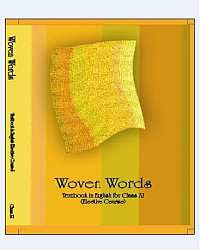English (Woven Words) : Class 11th

CONTENTS
Short Stories
Introduction
1. The Lament
Anton Chekhov
2. A Pair of Mustachios
Mulk Raj Anand
3. The Rocking-horse Winner
D.H.Lawrence
4. The Adventure of the Three Garridebs
Arthur Conan Doyle
5. Pappachi’s Moth
Arundhati Roy
6. The Third and Final Continent
Jhumpa Lahiri
7. Glory at Twilight
Bhabani Bhattacharya
8. The Luncheon
William Somerset Maugham
Poetry
Introduction
1. The Peacock
Sujata Bhatt
2. Let me Not to the Marriage of True Minds
William Shakespeare
3. Coming
Philip Larkin (Haiku)
4. Telephone Conversation
Wole Soyinka
5. The World is too Much With Us
William Wordsworth
6. Mother Tongue
Padma Sachdev
7. Hawk Roosting
Ted Hughes
8. For Elkana
Nissim Ezekiel (The Limerick)
9. Refugee Blues
W. H. Auden
10. Felling of the Banyan Tree
Dilip Chitre
11. Ode to a Nightingale
John Keats
12. Ajamil and the Tigers
Arun Kolatkar
Essays
Introduction
1. My Watch
Mark Twain
2. My Three Passions
Bertrand Russell
3. Patterns of Creativity
S.Chandrasekhar
4. Tribal Verse
G.N.Devy
5. What is a Good Book?
John Ruskin
6. The Story
E.M.Forster
7. Bridges
Kumudini Lakhia